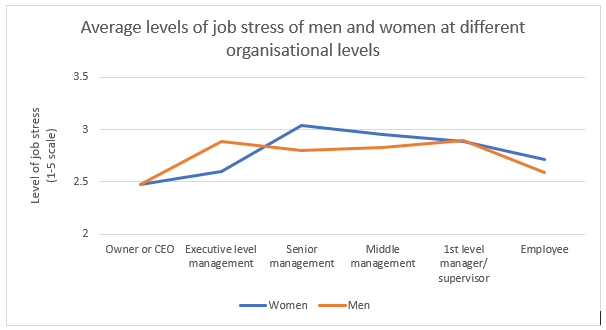Are Leaders More Stressed Than Everyone Else?
Nikhita Blackburn, Thought Leadership Lead Consultant, The Myers-Briggs Company
What images come to mind when you think of people in top executive leadership roles? Many people naturally think of a high-powered, stressful and demanding role.
However, research suggests this may not be the case. We wanted to understand how stress affects leaders at different levels in an organisation.
Research on Stress and Leadership
In several of our previous research studies, we looked at the stress levels of people at different levels in an organization. We've investigated stress in the context of the "always-on" culture, where people find it difficult or impossible to switch off, stress related to email usage and stress in the context of cybersecurity.
By looking at all three studies together (a total of 1,667 people), we have been able to identify common patterns. Click here to download the full report or continue reading for a summary.
1) People at the “top” and “bottom” of an organization are the least stressed
When looking at overall stress levels of leaders, we found a similar pattern across all three studies. Stress levels tended to be lower in both non-managers and top executive positions. So, being at the top and bottom of an organization seem to be least stressful.
2) Women report higher stress than men at middle and senior management positions, but significantly lower stress at executive level
If we compare stress levels of men and women at each leadership level, we find the biggest differences at middle, senior and executive management levels. For women, stress levels peak at middle and senior management levels. At these levels, women report significantly higher job stress than men. However, at executive levels, women’s stress levels drop significantly.
What does this mean?
We can see that women report higher stress levels at middle and senior positions than men, but that women’s stress levels drop significantly at executive level. There are several possible reasons for this. Firstly, middle and senior management positions may be more stressful for women than men. These positions are characterized by a need to prove yourself as a leader. Once executive level is achieved, that pressure reduces as you have proven your competence.
Another possibility is that women who are better at dealing with stress (whether that’s natural or learned) are the ones that tend to make the jump from senior to executive positions.
Finally, there are other factors that affect both stress levels and leadership position. For example, age could have an impact. We experience predictable life changes as we reach certain ages, such as starting a family, starting to look after parents and the effects of ageing. These can affect our stress levels and that may coincide with us reaching middle and senior management positions. Owners and CEOs are likely to have more control over their work, helping to reduce stress.
Considering what factors affect leaders can help organizations reduce biases when choosing leaders and help leaders manage their own stress levels as they progress.
